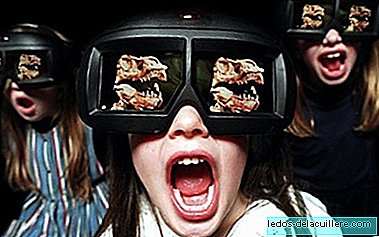
Can prolonged exposure to 3D technology affect the visual health of children? This is stated by the Varilux Institute, which recommends do not abuse 3D technology and that children under six do not undergo long-term sessions, since your vision has not yet fully developed.
This institution also recommends checking your eyesight in case we experience symptoms such as dizziness, headaches or double vision when we expose our eyes to the 3D format, which is so fashionable in recent years in movie theaters.
In addition, this technology has been extended to other segments of electronic entertainment, such as televisions, game consoles, cameras, books or smartphones.
However, be aware that the exposure of the view to a screen with 3D technology, for a long time, can have harmful effects on our visual health. The explanation is that the eyes are subjected to a high level of stress, since they must be adjusted in order to receive the images correctly and be able to reproduce the stereoscopic image.
More specifically, the Varilux Institute warns of risk run by children under six years having not fully developed its visual maturity, so it is advisable not to undergo long-term sessions.
The Institute is an institution dedicated to the care of vision, one of whose objectives is to promote awareness campaigns to improve the visual health of Spaniards.
We do not know how they have reached these conclusions, and the truth is that a few years ago we commented that there was no scientific evidence that seeing images on 3D screens entailed risks for children (although it was recommended not to abuse).
But in the current press release they indicate that it has been verified that during the 3D movie premieres of the year 2010 the greatest amount of dizziness and headaches corresponded to children.
All these symptoms could be indicative of the existence of some major problem, such as amblyopia ("lazy eye") or strabismus, so if we detect them we must go to the specialist.
If a person has amblyopia, his brain has to make a greater effort to be able to see the 3D images. Even, in some cases, the person is unable to see in this format.
In the case of strabismus, if the eyes are not synchronized, everyone receives an image, and their brain cannot process the 3D image.
Anyway, attention to the use of 3D technology in young children, as always moderation is good advice, to prevent 3D images from damaging children's visual health (Actually, any screen that you look for too long affects us). We also have the traditional 2D cinema ... and much to see outside the screens!
Official Site | Instituto Varilux In Babies and more | Video game for the treatment of children with the lazy eye, Build your own 3D glasses, 3D screens, is there a risk for young children?












